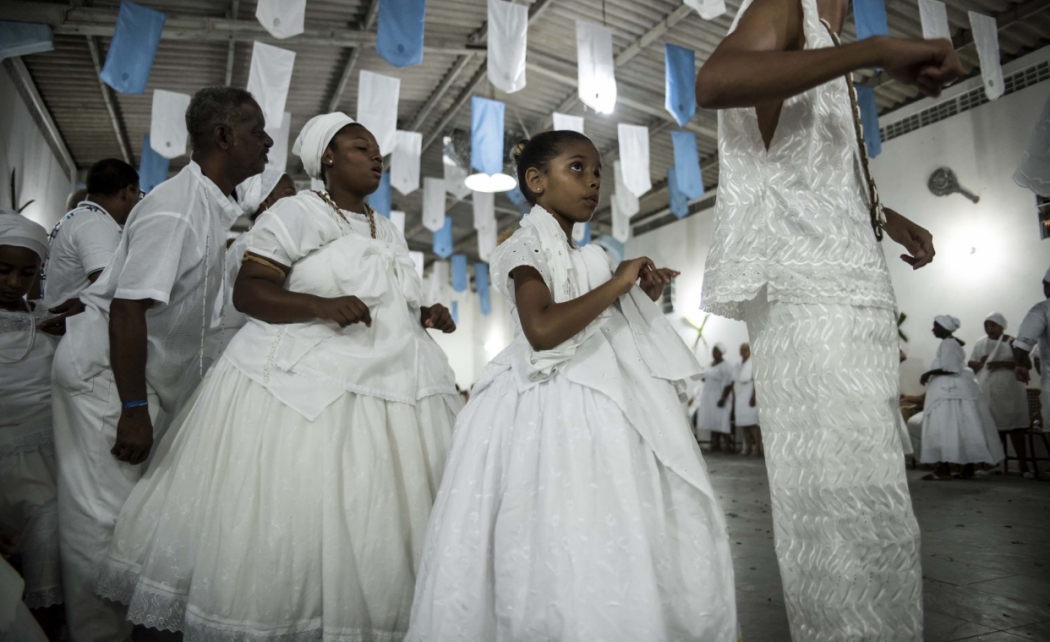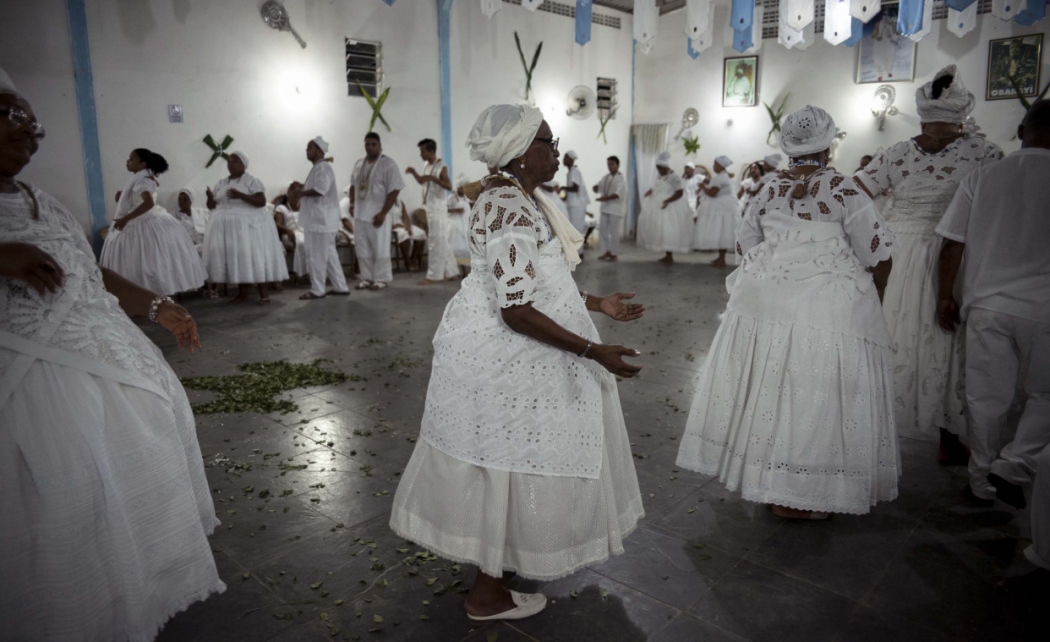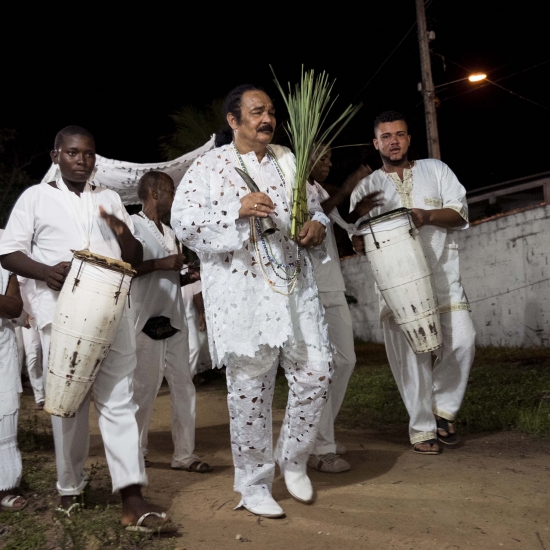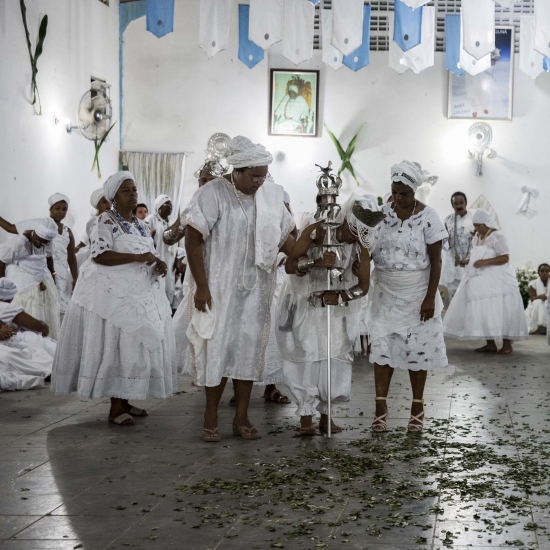Afro-Brazilian Cult of Candomblé
- – members of Ilê Axé Opô Ajagunã Temple, Areia Branca, Bahia, Brazil
The rituals of Dziady/Dzyady (‘Forefathers’), which are still celebrated in Belarus – Dzmitrauskiya Dzyady in the autumn and Radaunica in the spring – have long been reduced to food offerings and drunken revelries. The ancestor feasts of this kind are described in the Preface to the Kowno-Wilno Forefathers’ Eve by Adam Mickiewicz, who witnessed them and who, with apt intuition, reconstructed them in full in his play as a ritual séance involving the conjuring of spirits and mutual assistance between the living and the dead. Mickiewicz was right: to witness ancestral rituals as complete as these, one needs to travel to the islands and lands of the New World: Haiti, Cuba or Brazil.
Candomblé de Keto (pronounced can-dom-BLEH gee KEH-tuh) is the most popular, classical type of the Afro-Brazilian cult of Candomblé (the name derives from the historic Yoruba city-state of Kétou, now in the Republic of Benin). Candomblé literally means ‘custom of the Black people’ – former slaves who performed ritual dances to the beat of the drums. While dancing, those initiated into the temple (‘the daughters and sons of the gods’), fall into trance and are entered by African Orisha gods. There are 15-odd gods that enter (‘fall on’) the bodies of the dancers in line with a rigorous script called xirê (pronounced shee-REH), adherence to which is guarded over by the priest, babalorixá, also called pai-de-santo (pronounced bah-bah-loh-ree-SHA, pie-gee-SAN-tuh), the priestess ialorixá, also called mãe-de-santo (pronounced eayah-loh-ree-SHA, may-gee-SAN-tuh), and their helpers.
The ceremony begins with the ritual of sending the god Exu (pronounced eshoo), the Yoruba counterpart of Hermes or Mercury, out to bring other gods from the ancestral land. The gods are summoned by the beating of a battery of ritual drums: the rum (the largest and most important drum; pronounced hoom), the rumpi (the middle-sized drum; pronounced HOOM-pee) and the lé (the smallest drum), after all members of the brotherhood have performed their initial dances.
The dance of each Orisha is different, with variations resulting from the nature of their energy, axé (pronounced a-SHEH). During the ritual of the brotherhood of the temple Ilê Axé Opô Ajagunã (pronounced ee-LEH a-SHEH o-POH azha-goo-NAN), the most powerful gods of the Yoruba pantheon arrive. Oxalá (pronounced osha-LAH), the god of creation, appears either in his youthful incarnation, dancing upright like a warrior with dignified, noble movements, or as a decrepit old man, hunched, staggering and leaning on his stick. The dance of Yemanjá (pronounced yeah-man-ZHA), the goddess of the sea and mother of all Orishas, imitates the movement of ocean waves, with her hands mimicking small fish that splash in the water. From time to time, she makes as if to hug her child. Xangô (pronounced shan-GOH), the god of thunder and lightning, makes proud, imperious gestures, making as if to cast thunderbolts or write, noting down orders or rulings. Iansã (pronounced yan-SAN), the goddess of wind, rainstorms and the Niger River (hence her name Oyá, pronounced oh-YAH), embodies a wild, elemental force; her round dance, with arms and legs thrusting out, makes one think of strong gales. Every now and then she shakes a whisk, as if chasing off the spirits of the dead.
At the end of the ritual, a litany of the deities’ names are sung in unison, and the food offerings are eaten together – this communal meal attests to the link between the divine and the human, between the different members of the brotherhood, and, finally, between the brotherhood and the uninitiated guests, so that the latter can also enjoy a part of Africa – a long-lost land that is now being rediscovered through ritual.
Leszek Kolankiewicz



